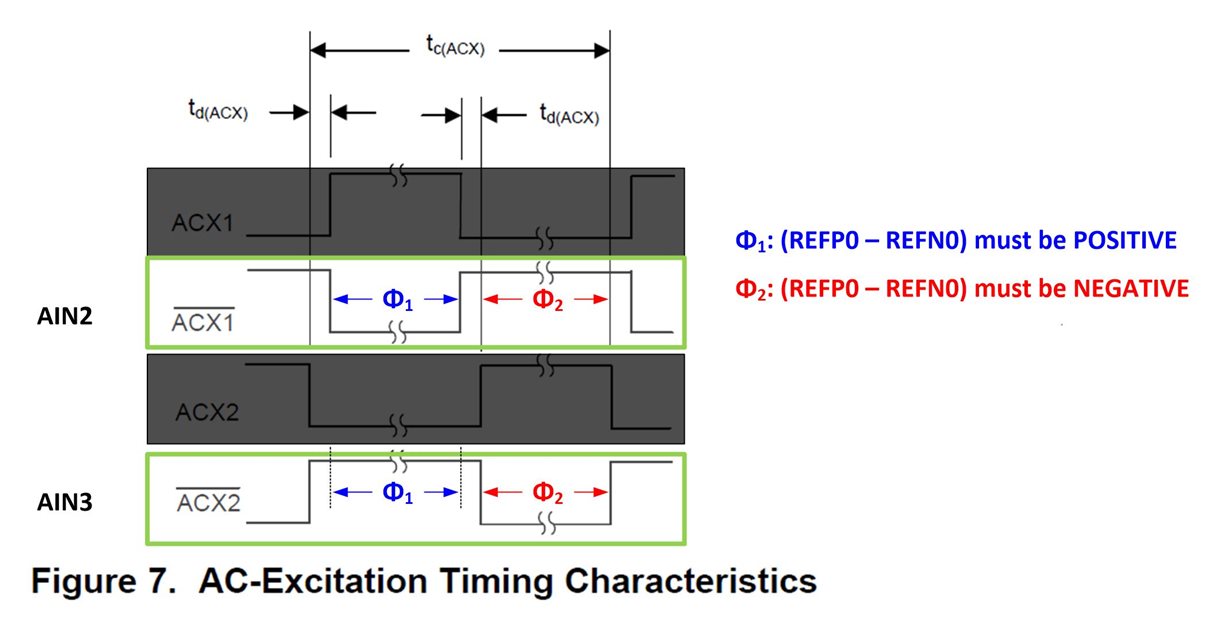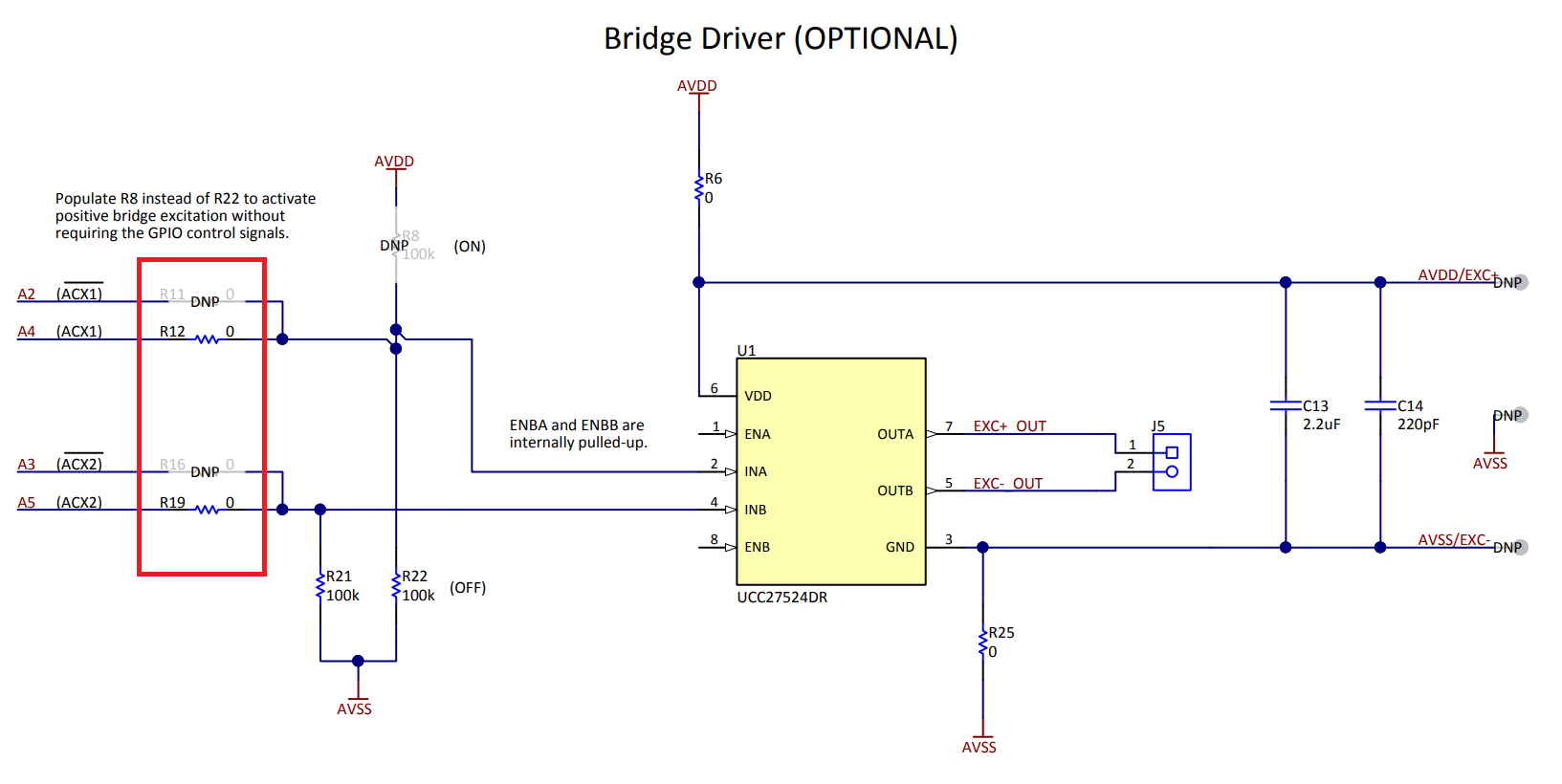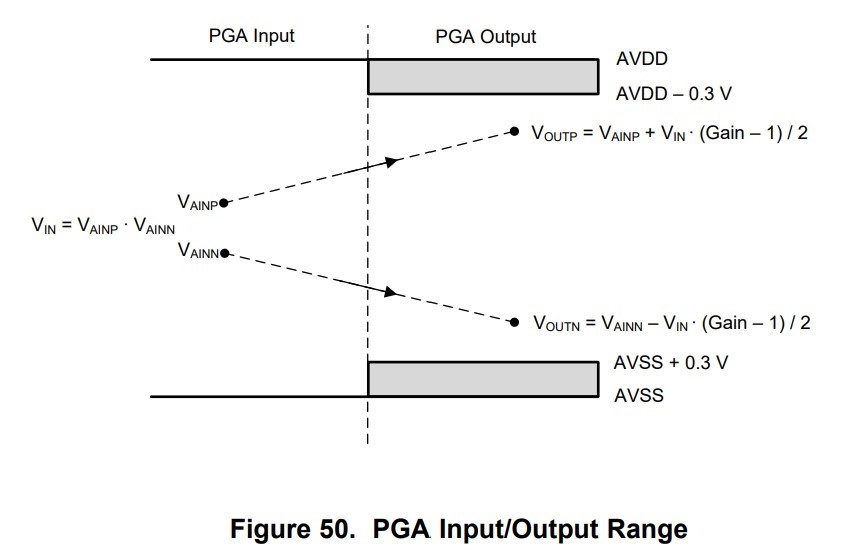Other Parts Discussed in Thread: TMUX1511, REF5050, , TPS7A47, TPS731
Dear Mr. Hall
Thank you for your help on this part in the past. As I've mentioned before, I've made some design errors on this project. After correcting the design errors, I'm ready to do another spin of this PCA. I don't know if you guys at TI do this sort of thing but if you can, I would really appreciate a design review on the attached schematic and pseudo code. My mistakes have already cost us a lot of money and I would like to avoid a repeat.
A brief description: I'm using the TI reference "Using the ADS1261 Integrated AC Excitation Mode to Remove System Offset and Drift sbaa290" as a design guide. I'm measuring three things; excitation current, bridge supply voltage and the bridge output voltage. I'm using the 5vdc AVCC as a reference for the excitation current and bridge supply voltage measurements and the bridge supply voltage as a ratiometric reference for the bridge output voltage measurement. Please see attached. Any and all comments and corrections are very much appreciated. Thank you.
Dennis_Test_2-2.pdfADS1261 Pseudo Code for AC Excitation.docx





